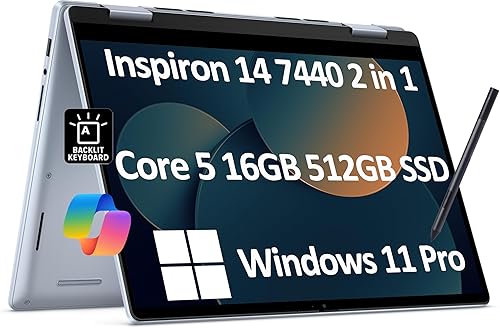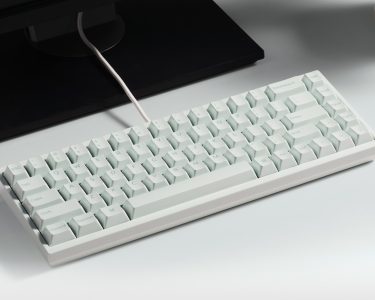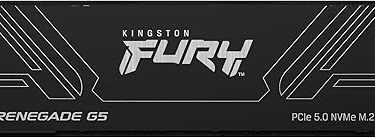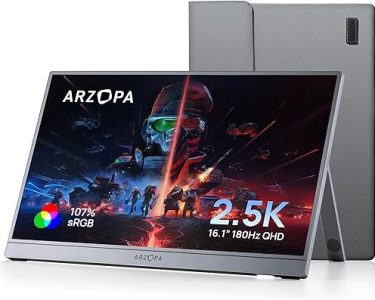Sometimes a quick, light, and comfy laptop is all you need. In a word, that is everything that the Dell Inspiron 14 2-in-1 is. Additionally, it is unquestionably worthwhile if you can overlook a few defects and discover that it is on sale. Now let us get started.
Specification
There are two variations of the Dell Inspiron 14 2-in-1 available. At the time of writing, the lower-tier setup costs $729 and comes with an AMD Ryzen 5 8640HS processor, 512GB of storage, and 8GB of RAM. The RAM and storage are doubled in the higher-end model, with a $950 price tag. Additionally, a Ryzen 7 8840HS processor—an improvement over the base model—is included. Normally, I would say it makes sense to pay the extra money for the higher-end model, but in this instance, the pricing is a little more convoluted; more on that later.
While rather outdated, these specifications are still quite good. Although the CPUs are from 2023, it does not matter because they have the Copilot functions and the new button that Microsoft actively promotes with Windows. The $950 model that we are evaluating has a few missing parts but is otherwise a rather sturdy construction.
- 2-in-1 Dell Inspiron 14 (7445)
- AMD Ryzen 7 8840HS CPU
- Memory: DDR5-5600 (16 GB) Graphics/PUB: AMD Radeon 780M
- Display: IPS Touch 1920×1200 60Hz
- 1TB PCIe NVMe solid-state drive for storage
- Camera: 1080p camera
- Two USB Type-C® 3.2 Gen 2 (10 Gbps), two USB 3.2 Gen 1 Type-A ports, one HDMI 1.4 port, one SD card reader, and one universal audio jack make up the connectivity.
- Networking: Bluetooth 5.3, Wi-Fi 6E
- Biometrics: Reader for fingerprints
- 54 watt-hours of battery capacity
- Measurements: 12.36 by 8.9 by.62
- 3.77 pounds in weight
- Retail price: $949.99
Is it possible for a design to be both playful and generic at once? That is a question that this Dell Inspiron raises. If you were to take a cursory look at it, it would blend in with the sea of plain laptops that lack whimsical features like RBG lighting or enormous speaker vents. Nevertheless, it has a pleasing appearance despite its simple design. That is partly because of the Icy Blue coloring, which is primarily subtle and changes somewhat in tone depending on how you view it. If you would rather have something a little darker, you can also order it in midnight blue.
Because of the materials used, the laptop itself feels more expensive than its pricing would indicate. Because the entire body is made of aluminum, the laptop is lighter than typical for this price range, feels cool to the touch, and does not creak or moan. It isn’t too hefty and still registers in under four pounds, if barely, but it is a smidge beyond “heavier feels more premium” advantages.
Keyboard and trackpad
What have I come to value, you know? a decently sized laptop keyboard without extra buttons for extra functionality. It is true that this Dell, like other new computers, comes with a Copilot key that you most likely will not use. Beyond that, though, it contains what you require and nothing more. Of course, there is no number pad, but considering the laptop’s size, what is there does not feel all that crowded. Travel is good, although a little shallow, and the fingerprint sensor does imply that the media keys row and less frequently used function have considerably smaller buttons. But since you only deal with those when you truly need them, that’s not as big a loss. In terms of typing noise, the keys are not too loud, so you probably will not disturb those nearby while you clack away.
The right amount of click feel without click noise is there. Keyboard backlighting is available, albeit it is a very straightforward feature. This place is all white, with no RGB rainbow to be found. Pressing the backlighting button alternates between “bright,” “dim,” and “off.” However, because the offered brightest option is not that bright, I put the word “bright” in quotes. The trackpad is nice, snappy, and centered over the keyboard, which is how I like it. Given that this laptop has a touchscreen, multi-touch motions like two-finger scrolling perform quite well, albeit you might never utilize those features. You can only click in the bottom corners, however, and weirdly doing so involves a little too much movement. I occasionally did not push far enough, which prevented me from clicking. However, there is a pleasing click sound produced by that deep travel.
Speakers and display
Take nothing below as compliments. The speakers on the Dell are very loud. When the volume was only displayed at 28 (out of 100), I found myself quickly lowering the speakers down. Turn up the volume to the point that the laptop chassis itself vibrates like a massive speaker in addition to filling the space. I finally decided, for the benefit of my hearing, on approximately eleven. If only loud noises indicated a nice sound that’d be a fairly good report. The nicest thing I can say about these speakers is that they can become loud.
In terms of sound profile, you get something that sounds like audible mud. Everything blends into a mush, making it impossible to distinguish between the highs and mids. Ignore the lows. Although it is better to have speakers than none at all, if you want anything to sound well, I suggest utilizing Bluetooth earbuds. Regarding the display, there are positive and negative updates. The good news is the 1920×1200 resolution looks beautiful and crispy. The text is simple to read, and even at an angle, the video content looks good. While 4K resolution may seem appealing, increasing the resolution has drawbacks such as reduced battery life and altered text size.

I think Dell made the right decision with this particular laptop. Of course, a touchscreen is included because this is a 2-in-1 laptop that can also fold into a tablet. That works well enough in terms of responsiveness, but Windows 11 is still a major drawback because it is not a very good touchscreen operating system.
The bad news is that Dell chose a somewhat dark display, which is a strange decision considering that a lightweight 2-in-1 laptop is obviously intended for travel and may even be used outside. When I initially turned it on in my office, I thought I should increase the display’s brightness, but I soon found out it was already at its highest setting. It is hardly bright enough for indoor use at 250 nits. Additionally, do not try using it outside on a sunny, bright day. I can not understand it because this laptop’s intended use case is at odds with having such a dim display. However, it will work if you just intend to use it indoors.
Ports and connectivity
From a technical standpoint, the Dell Inspiron 14 7445 features more ports than you may anticipate for a 2-in-1 at this price point. However, there is a chance that some of those ports are not the greatest ones. Consider the HDMI port as an example. Although having the ability to attach an external display is convenient, the HDMI 1.4 port is outdated and only supports 1080p resolution.
Furthermore subpar are the USB-C ports. Although USB 3.2 operates at 10 Gbps, which is not slow in theory, they do not have the same transfer rates as USB 4, which is 40 Gbps. That slow HDMI port is at least offset by the DisplayPort 1.4 connection, which supports a 4K monitor. I wish they were not immediately next to each other but rather on different sides because they also serve as your power ports. Moreover, there are two USB-A 3.2 ports on each side, so you may use your older flash drive peripherals without the need for dongles.
Surprisingly, a full-sized SD card slot is also included, which is uncommon in laptops in this price range these days. In addition, the combo audio jack is a welcome addition, because many laptops these days do not come with one. Although it is not the newest standard available, Wi-Fi 6E works just fine. Additionally, Bluetooth 5.3 is included, which is ideal for earbuds or headphones—especially if you want to get rid of those bad speakers.
Performance
This Dell is equipped with an AMD processor, the Ryzen 7 8840HS. The best CPU for light to medium jobs is that one. You probably will not be let down if you approach it that way, but do not expect to run Adobe Premiere and produce impressive videos. With 16GB of RAM and 1TB of fast storage, it should be able to compete with other laptops of a comparable price in some situations. PCMark 10 is a useful test for general performance, so we start there. We use our laptops by plugging them into the wall, which is noteworthy because AMD processors tend to experience performance throttling while not plugged in.
And so, the Dell outperforms even the Lenovo ThinkPad X1 Carbon at first when placed against other laptops with nearly equal processors. Since this is a test of general performance, it does not apply to demanding applications like graphic design or gaming, but for daily use—especially for a dual-purpose laptop—it is encouraging. Next up is Cinebench R23, a multithreaded CPU test. Because AMD processors have a high number of cores and threads, they usually perform well in this test.
That is demonstrated by the Dell, which comes in second only to the Lenovo ThinkPad X1 Carbon in terms of score. Even still, given how similar those results are, it is possible to retake the exams and observe a change in positions. Although multi-threaded software is not compatible with every application, it explains why I have never seen lag in my everyday use of browsers, writing reviews, playing music, and other applications.
Next step, we test the video ending by using the Handbrake. It is a useful test to determine how performance holds up over time, and AMD usually excels in this domain. And this Dell aims for the highest score on the list once more. It performs admirably, even in comparison to other AMD computers we have tried. It managed fans well, surprisingly, and never reached jet engine noise levels. When combined with an AMD processor, Dell’s laptop has impressive thermal performance, making it a suitable choice for long-term performance requirements.
Conclusion
It did not quite live up to my expectations, even though I knew I was holding the more powerful version of the Dell Inspiron 14 2-in-1. Of course, the $949 model has more features than the $749 model. More RAM, storage, and computing power are yours to have. You will not receive as much power with the lower-tier model, thus I would say it is nearly a must-upgrade. Nevertheless, real-world application and performance benchmarks are not always compatible.
It generally lived up to my expectations when I viewed the gadget as the media-focused convertible that it was intended to be. The writing is clear, the keyboard is good, the case feels fantastic in the hand, and there are many connectors (albeit not fast ones). This 2-in-1 has many positive aspects, and I have very few (but not insignificant) issues. But one factor holds me back from issuing a full recommendation: the price.
Normally, I would say $949 is reasonable considering what you get (apart from that boring display), but I have seen it go for less. The more costly model is frequently available for around the same cost as the entry-level model. It is also difficult to deny that you may upgrade to better specs without having to pay more money after I have repeatedly stated how worthwhile it is to do so. If you can overlook its shortcomings, the Dell Inspiron 14 2-in-1 is a decent option all around. However, unless it is on sale, I can not advocate buying it because paying full price feels excessive.





